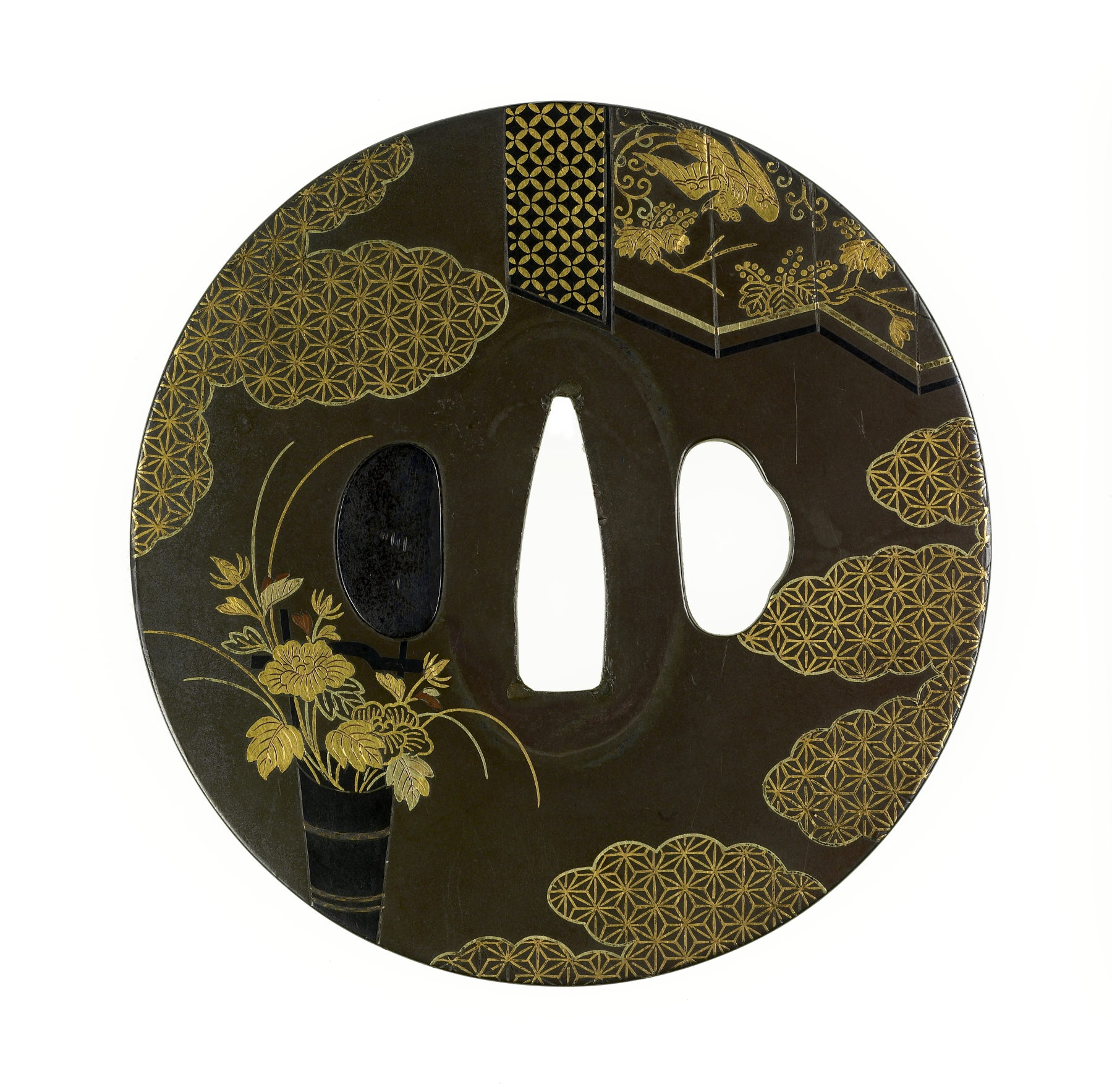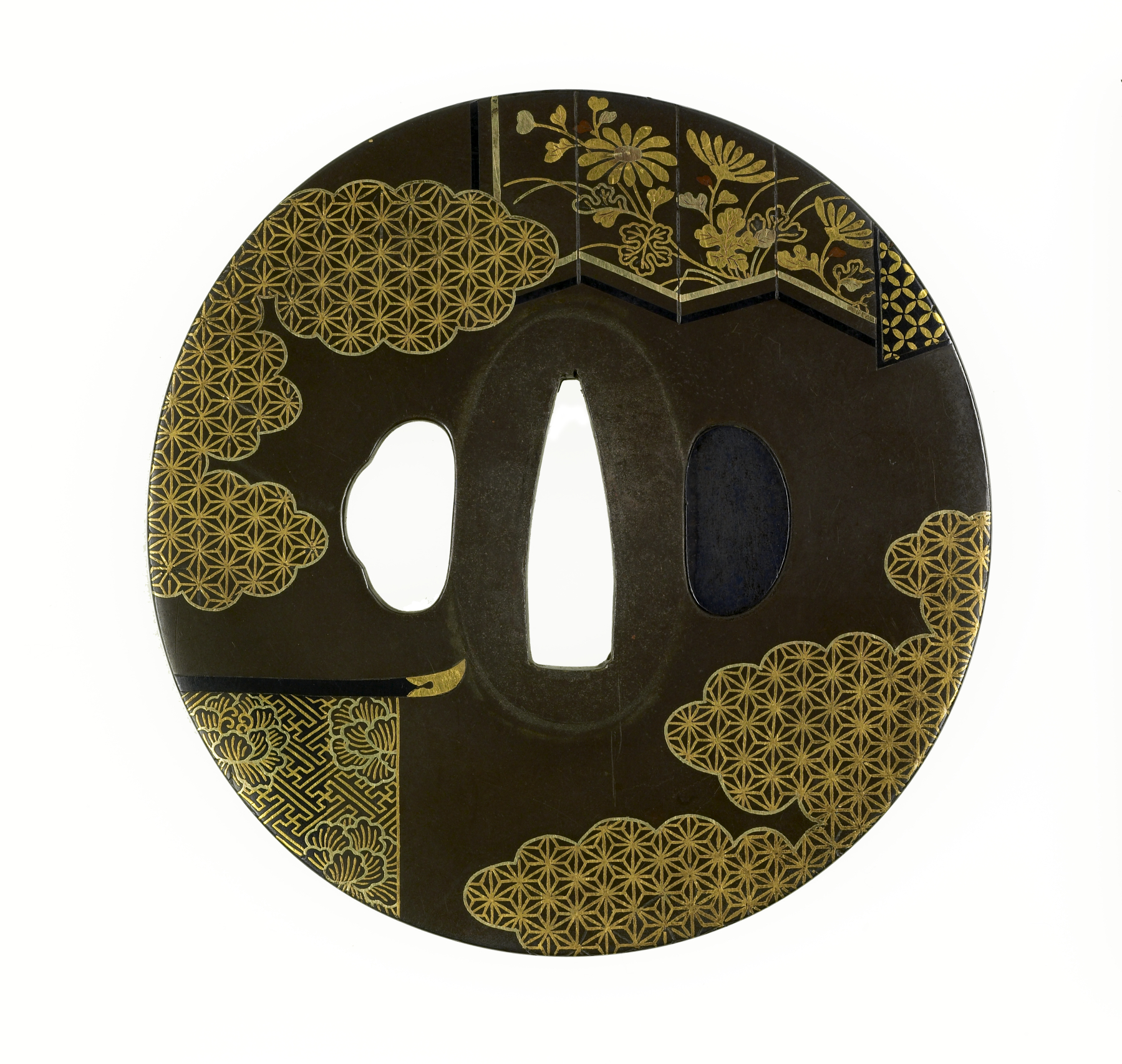Tsuba with a Folding Screen and Clouds
(Japanese Military Armor)
At the upper right and lower left of the tsuba two folding screens can be seen. On the front of the tsuba, the upper screen depicts hawks and paulownia. The lower screen has a floral bouquet, including peonies. On the back, the screen in the upper right depicts several flowers. The pattern of the screen on the lower left seems to be the back side of the screen. On both sides, the area between the two screens is filled with clouds patterned in gold enamel.
Inscription
Provenance
Provenance (from the French provenir, 'to come from/forth') is the chronology of the ownership, custody, or location of a historical object. Learn more about provenance at the Walters.
Henry Walters, Baltimore [date and mode of acquisition unknown]; Walters Art Museum, 1931, by bequest.
Exhibitions
| 1990 | The Japan Idea: Art and Domestic Life in Victorian America. Wadsworth Atheneum Museum of Art, Hartford. |
| 1984 | The Taste of Maryland: Art Collecting in Maryland 1800-1934. The Walters Art Gallery, Baltimore. |
Conservation
| Date | Description | Narrative |
|---|---|---|
| 4/18/1984 | Treatment | cleaned |
Geographies
Japan (Place of Origin)
Measurements
H: 3 1/16 × W: 3 × D: 3/16 in. (7.8 × 7.6 × 0.4 cm)
Credit Line
Acquired by Henry Walters
Location in Museum
Not on view
Accession Number
In libraries, galleries, museums, and archives, an accession number is a unique identifier assigned to each object in the collection.
In libraries, galleries, museums, and archives, an accession number is a unique identifier assigned to each object in the collection.
51.155




